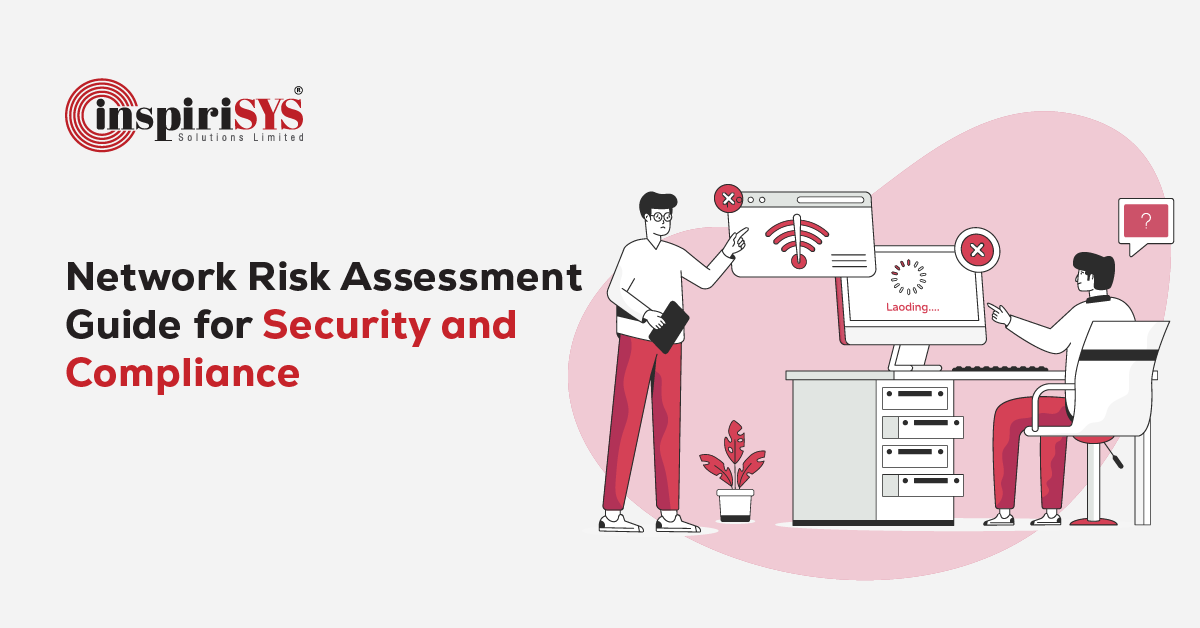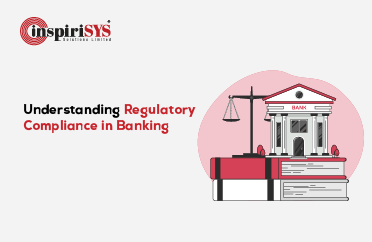Quick Summary: Network risk assessment is a structured approach to identifying and managing vulnerabilities across an organization’s infrastructure. It helps prioritize threats, align security efforts with business needs, and ensure ongoing protection. By combining tools, testing methods, and stakeholder inputs, organizations can gain clear visibility into their risk exposure.
As organizations expand their digital infrastructure, the potential for hidden weaknesses grows alongside it. Those that embed risk identification into their core operations tend to respond with greater agility and maintain continuity even during disruptive events.
In an environment where threats evolve faster than traditional defenses, taking a structured approach to understanding risk becomes essential. Beyond meeting compliance goals, it helps security teams prioritize efforts, align with business objectives, and make informed decisions backed by real insights.
This article outlines the full process, common risks, best practices, and popular tools used in network risk evaluation and how it can support smarter, business-aligned security decisions.
What is Network Risk Assessment?
A network risk assessment is a structured process used to evaluate the security health of an organization’s network environment. It involves reviewing key components such as infrastructure, configurations, and access controls to identify vulnerabilities that could be exploited by malicious actors.
This is broader than typical compliance audits or targeted vulnerability scans. Rather than focusing on specific standards or technical flaws alone, it examines how security gaps could impact the continuity and integrity of business operations.
The goal is to provide a comprehensive understanding of risk exposure—enabling informed decisions around mitigation strategies, resource allocation, and long-term security planning.
Why Is Network Risk Assessment Important?
Understanding and managing network risks is crucial for maintaining a strong security foundation. One of the key benefits of network risk analysis is early threat detection. Regular evaluations help find loopholes before they are exploited, offering organizations the chance to fix issues proactively. This forward-looking approach minimizes the likelihood of security incidents and reduces potential damage.
It also plays a central role in shaping long-term security strategies. By identifying weak points in the network, businesses can design focused security plans that support their operational goals. Rather than applying generic solutions, security efforts become more aligned with the actual risks that affect the organization’s environment.
Frameworks such as PCI DSS, HIPAA, and GDPR mandate regular security reviews as part of their compliance obligations. Ignoring these requirements can lead to penalties, legal consequences, and a loss of trust among customers and stakeholders.
Another key advantage lies in better resource management. With a clear view of which areas present the highest risk, teams can direct their time, tools, and investments more efficiently. This avoids unnecessary spending and ensures that security initiatives deliver maximum impact.
Ultimately, skipping or delaying network scans increases exposure to a wide range of threats, including malware, ransomware, and data breaches. Over time, unchecked vulnerabilities can accumulate, turning the network into a high-value target for attackers and putting both reputation and revenue at risk.
Key Components of Network Risk Assessment

Every effective risk assessment framework is built on a set of foundational components. These elements work together to expose suscetibility, measure risk, and guide informed security decisions.
1. Asset Inventory and Classification
The process begins by identifying all network-connected assets like hardware, software, services, and data flows. These are then classified based on their importance to operations and the sensitivity of the information they handle. Without this step, organizations risk misallocating resources or leaving high-value systems unprotected.
2. Threat Identification
This stage focuses on recognizing the various threats that could exploit existing vulnerabilities. These may include cyberattacks, insider misuse, natural disasters, or system failures. A well-rounded assessment accounts for both industry-wide risks and those specific to the organization’s context.
3. Vulnerability Scanning
Automated tools are used to detect known gaps within systems, applications, and network infrastructure. These scans help flag outdated software, misconfigurations, and security flaws while establishing a baseline for further analysis and remediation.
4. Risk Analysis and Prioritization
Once weaknesses are identified, their likelihood and potential business impact are evaluated. Risks are ranked based on severity, helping organizations address the most urgent issues first and allocate resources more effectively.
5. Mitigation Planning
The final component involves formulating a strategy to manage and reduce identified risks. This includes defining which risks to mitigate, accept, or transfer, along with clear action plans that balance short-term fixes and long-term improvements.
By addressing each of these components systematically, organizations can find hidden gaps, understand the full scope of their network exposure, and lay the groundwork for actionable risk mitigation.
Common Network Security Risks

Every network risk assessment reveals a range of gaps, some widespread, others industry specific. Recognizing the most common risks is the first step toward reducing exposure and building a stronger defence.
1. Insider Threats
Employees, either accidentally or with intent, compromise network security. This could include unauthorized access, mishandling of sensitive information, or sharing data with external actors. Since insiders often have legitimate access, these threats can be difficult to detect without proper monitoring.
2. Phishing Attacks
Phishing assaults succeed by exploiting human psychology rather than technical vulnerabilities. Attackers send deceptive emails designed to trick employees into revealing login credentials, personal information, or financial data. Even organizations with strong technical defences can be compromised if user awareness is lacking.
3. Weak Access Controls
Poorly managed access rights and the use of weak or reused passwords create significant security gaps. When users have more privileges than necessary, or when credentials are easily guessable, it becomes easier for attackers to move laterally within the network after gaining entry.
4. IoT Vulnerabilities
As businesses adopt more Internet of Things (IoT) devices, their risk surface expands. Many IoT devices lack basic security features, such as encryption or regular updates, making them easy entry points for attackers seeking to infiltrate the broader network.
These risks, while common, can have serious consequences if not addressed. Identifying them early during a risk analysis helps organizations implement stronger defenses before incidents occur.
Types of Network Security Risk Assessments
To fully understand your network’s exposure to threats, it's essential to use a combination of assessment methods. Each type serves a distinct purpose, targeting different areas of risk and providing valuable insights that inform better security decisions.
1. Vulnerability Assessment
It systematically scans the network to identify known weaknesses, such as outdated software, misconfigured devices, or missing patches. It doesn't simulate an attack but helps discover potential entry points that attackers could exploit if left unaddressed.
This type of assessment is particularly useful for creating a base for your network’s security health. It supports ongoing monitoring by highlighting gaps before they escalate into serious threats, allowing IT teams to prioritize fixes based on severity and impact.
2. Penetration Testing
System evaluations identify latent vulnerabilities, whereas penetration testing illustrates the practical avenues for exploitation. It involves ethical hackers simulating cyberattacks on your systems to test the effectiveness of current security defenses.
Penetration tests help organizations understand the true risk of a breach by revealing the paths an attacker might take to move within the network. These tests are critical for assessing incident response readiness, validating existing controls, and revealing security blind spots that routine scans might miss.
3. Security Audit
Security audits take a broader view of the organization’s security posture, focusing on policies, controls, and compliance with regulatory standards like ISO/IEC 27001, GDPR, or NIST. Rather than just identifying technical flaws, audits evaluate how well security practices align with industry and legal requirements.
This type of assessment is especially important for regulated industries or businesses that must demonstrate due diligence to partners and customers. A security audit can uncover policy gaps, outdated procedures, or weaknesses in governance by providing a roadmap for aligning security strategies with organizational objectives.
Steps to Perform a Network Security Assessment

Conducting a thorough network security assessment involves a structured process that helps detect flaws, evaluate risks, and strengthen defenses. Below are the key steps to follow for a well-executed assessment.
1. Map and Classify Network Assets
Begin by creating a complete inventory of all devices, systems, and services connected to the network. This includes servers, workstations, mobile devices, IoT endpoints, cloud resources, and virtual machines. Use automated asset discovery tools to ensure no device is missed.
Alongside mapping, classify assets based on their business value and data sensitivity. This step provides visibility into critical systems and helps determine where protective efforts should be concentrated.
2. Detect Threats and Expose Vulnerabilities
Once assets are identified, examine the network for security gaps. This involves scanning for outdated software, unpatched systems, open ports, weak configurations, and gaps in endpoint protection. Run vulnerability scans and configuration audits to gather data.
To strengthen this phase, integrate continuous monitoring tools that alert teams about suspicious activity or system misconfigurations, enabling faster response and early threat detection.
3. Assess and Prioritize Risks
Not all inconsistencies pose the same level of risk. Categorize risks based on factors like exploitability, potential damage, and exposure level. Risk scoring models such as high, medium, or low help determine what should be fixed first.
This prioritization ensures that the most urgent threats, especially those affecting external-facing or business-critical systems, receive immediate attention.
4. Strengthen Security Controls
Based on identified risks, enhance the organization’s security posture by implementing effective controls. This includes deploying firewalls, Intrusion Prevention Systems (IPS), endpoint protection, and enforcing access controls with multi-factor authentication.
Encrypt sensitive data during storage and transmission, and review security policies to ensure they align with the latest threat landscape. Together, these controls provide layered protection against external and internal threats.
5. Create a Targeted Remediation Plan
Defines how vulnerabilities will be addressed. A solid remediation plan should assign roles, establish timelines, and include escalation procedures for high-risk findings. Focus on resolving high-impact issues first and automating routine fixes where possible.
Incorporate regular reviews to track progress, ensuring that mitigation efforts are on track and well-coordinated across teams.
6. Apply Fixes and Monitor Improvements
Deploy the necessary fixes, ranging from configuration updates and security patches to policy enforcement and monitor their effectiveness. Use network visibility tools to track changes and detect any configuration drifts from the secure baseline.
Ongoing evaluation is critical. It helps ensure that newly applied measures are working as intended and that the network remains resilient in the face of evolving threats.
Critical Network Assessment Checks
A successful assessment begins with a clear understanding of the network environment. Here are the essential aspects to consider, grouped under logical focus areas:
Planning and Coordination
- Define the assessment goals and clearly outline its scope.
- Identify and involve all relevant internal stakeholders early on.
- Gather current network architecture diagrams and security control documentation.
Network Environment Understanding
- Locate all network segments, boundaries, and external connection points.
- Audit configurations of routers, firewalls, switches, and other network devices.
System and Software Overview
- Create an inventory for all connected systems, servers, endpoints, and applications.
- Document operating systems, patch levels, and software versions in use.
- Review the security status and configurations of all applications and databases.
Access and Identity Controls
- Evaluate user access levels, authentication methods, and third-party access points.
Data Security Framework
- Identify and classify sensitive data storage locations and transmission paths.
- Inspect encryption practices, backup mechanisms, and data loss prevention controls.
- Ensure alignment with relevant regulatory and data protection standards.
Operational Security Processes
- Assess logging capabilities, incident response procedures, and awareness training impact.
- Review how changes to systems and configurations are tracked and managed.
Risk Documentation and Remediation Planning
- Determine how risks will be ranked, reported, and addressed through action plans.
Best Practices for Network Risk Assessment
To improve the impact of your assessment efforts, apply these best practices that focus on accuracy, relevance, and long-term resilience.
1. Schedule Assessments Regularly
Maintain a consistent assessment cycle to catch new vulnerabilities as they arise. Regular reviews help your security posture adapt to changes in infrastructure, user behavior, and threat trends.
2. Combine Automated and Manual Testing
Leverage the speed of automated tools while using manual techniques to validate findings and resolve complex issues. This dual approach reduces false positives and delivers more actionable insights.
3. Align Assessments with Business Priorities
Involve business and functional stakeholders to ensure identified risks are evaluated through a business lens. This helps prioritize fixes that protect critical operations and justify security investments.
4. Connect Findings to Broader Security Programs
Feed assessment results into incident response, patch management, and user training efforts. Integrating insights ensures risks are not just identified, but effectively addressed within your larger security strategy.
When embedded into routine security efforts, these best practices help transform network risk assessments from a reactive task into a proactive, business-aligned security function.
Popular Network Risk Assessment Tools

The right tools can make a significant difference in identifying and managing network risks effectively. These solutions help automate scans, streamline analysis, and provide actionable insights to strengthen your security posture.
1. Nessus
Nessus is a widely used vulnerability assessment tool that scans for misconfigurations, outdated software, and known exploits across networked systems. Its robust plugin architecture allows continuous updates based on emerging threats.
2. OpenVAS
OpenVAS is an open-source scanner that offers a comprehensive suite of features for detecting security issues across networks. It supports regular vulnerability feeds and allows custom configuration for in-depth risk analysis.
3. Qualys Guard
Qualys provides cloud-based vulnerability scanning and asset discovery. Its detailed reports help organizations prioritize threats based on risk levels, compliance requirements, and business impact.
4. Rapid7 InsightVM
InsightVM delivers real-time visibility into network loopholes and supports live dashboards, risk scoring, and remediation tracking. It integrates well with DevOps workflows and endpoint protection tools.
5. FireMon
FireMon focuses on network security posture management by analyzing firewall rules, access controls, and configuration changes. It helps identify gaps in enforcement and suggests policy improvements.
These tools support a proactive and scalable approach to network risk assessment, enabling faster, more informed decisions.
Conclusion
In an era of increasingly complex and connected infrastructures, network risk assessment is not just a security best practice, it’s a business necessity. A well-structured assessment offers clarity by identifying hidden vulnerabilities and evaluating their real-world risks.
But assessment alone isn’t enough. The real value lies in acting on those insights, prioritizing risks, implementing targeted controls, and integrating security across the organization’s ecosystem. That’s where the right expertise and tools make all the difference.
Inspirisys Cybersecurity Solutions supports every stage of the risk assessment lifecycle and our team ensures your network is protected with precision and purpose.
Frequently Asked Questions
1. How is a Network Tested for Security and Performance?
Network testing involves multiple steps such as scanning for open ports, verifying firewall configurations, monitoring data flow, and identifying exploitable weaknesses. Tools like Nessus, OpenVAS, and Astra are commonly used to detect vulnerabilities and validate system integrity.
2. How Often Should a Network Risk Assessment Be Performed?
While an annual assessment is the minimum recommended, more frequent evaluations—such as quarterly or after significant changes—are advised for businesses handling sensitive data or operating in high-risk sectors. Regular assessments help stay proactive against evolving threats.
3. Who Should Participate in a Network Risk Assessment?
Effective assessments require collaboration between IT teams, security professionals, compliance managers, and often third-party experts. Involving diverse roles ensures a holistic review of the network and better alignment with business, security, and regulatory needs.
4. What is the difference between Black Box, White Box, and Grey Box testing?
The key difference lies in how much access the tester has to the system. Black Box testing mimics an external attacker with no prior knowledge, focusing on perimeter defenses. White Box testing provides full internal access to uncover deep vulnerabilities. Grey Box testing strikes a balance, offering limited insight to simulate threats from semi-informed insiders.







